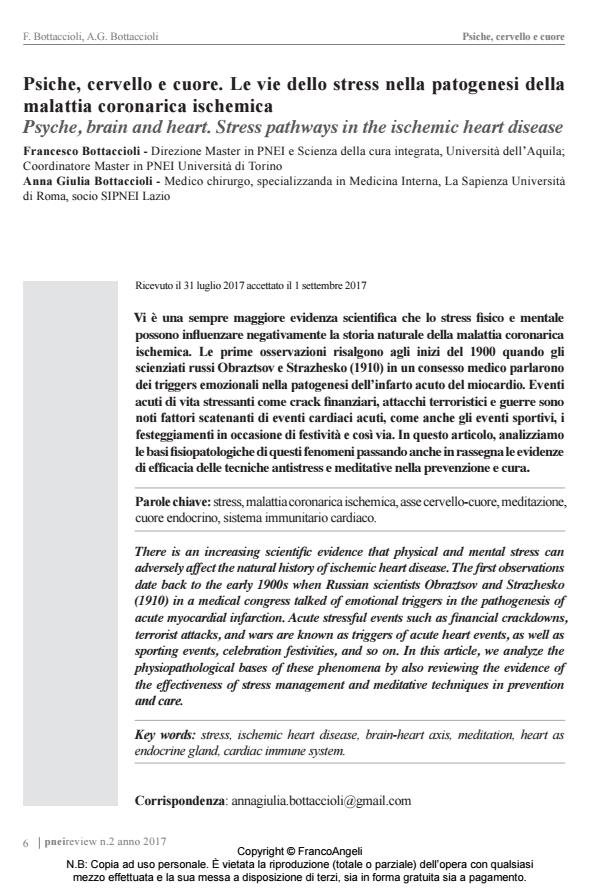Psyche, brain and heart. Stress pathways in the ischemic heart disease
Journal title PNEI REVIEW
Author/s Francesco Bottaccioli, Anna Giulia Bottaccioli
Publishing Year 2017 Issue 2017/2
Language Italian Pages 18 P. 6-23 File size 1243 KB
DOI 10.3280/PNEI2017-002002
DOI is like a bar code for intellectual property: to have more infomation
click here
Below, you can see the article first page
If you want to buy this article in PDF format, you can do it, following the instructions to buy download credits

FrancoAngeli is member of Publishers International Linking Association, Inc (PILA), a not-for-profit association which run the CrossRef service enabling links to and from online scholarly content.
There is an increasing scientific evidence that physical and mental stress can adversely affect the natural history of ischemic heart disease. The first observations date back to the early 1900s when Russian scientists Obraztsov and Strazhesko (1910) in a medical congress talked of emotional triggers in the pathogenesis of acute myocardial infarction. Acute stressful events such as financial crackdowns, terrorist attacks, and wars are known as triggers of acute heart events, as well as sporting events, celebration festivities, and so on. In this article, we analyze the physiopathological bases of these phenomena by also reviewing the evidence of the effectiveness of stress management and meditative techniques in prevention and care.
Keywords: Stress, ischemic heart disease, brain-heart axis, meditation, heart as endocrine gland, cardiac immune system.
Francesco Bottaccioli, Anna Giulia Bottaccioli, Psiche, cervello e cuore. Le vie dello stress nella patogenesi della malattia coronarica ischemica in "PNEI REVIEW" 2/2017, pp 6-23, DOI: 10.3280/PNEI2017-002002